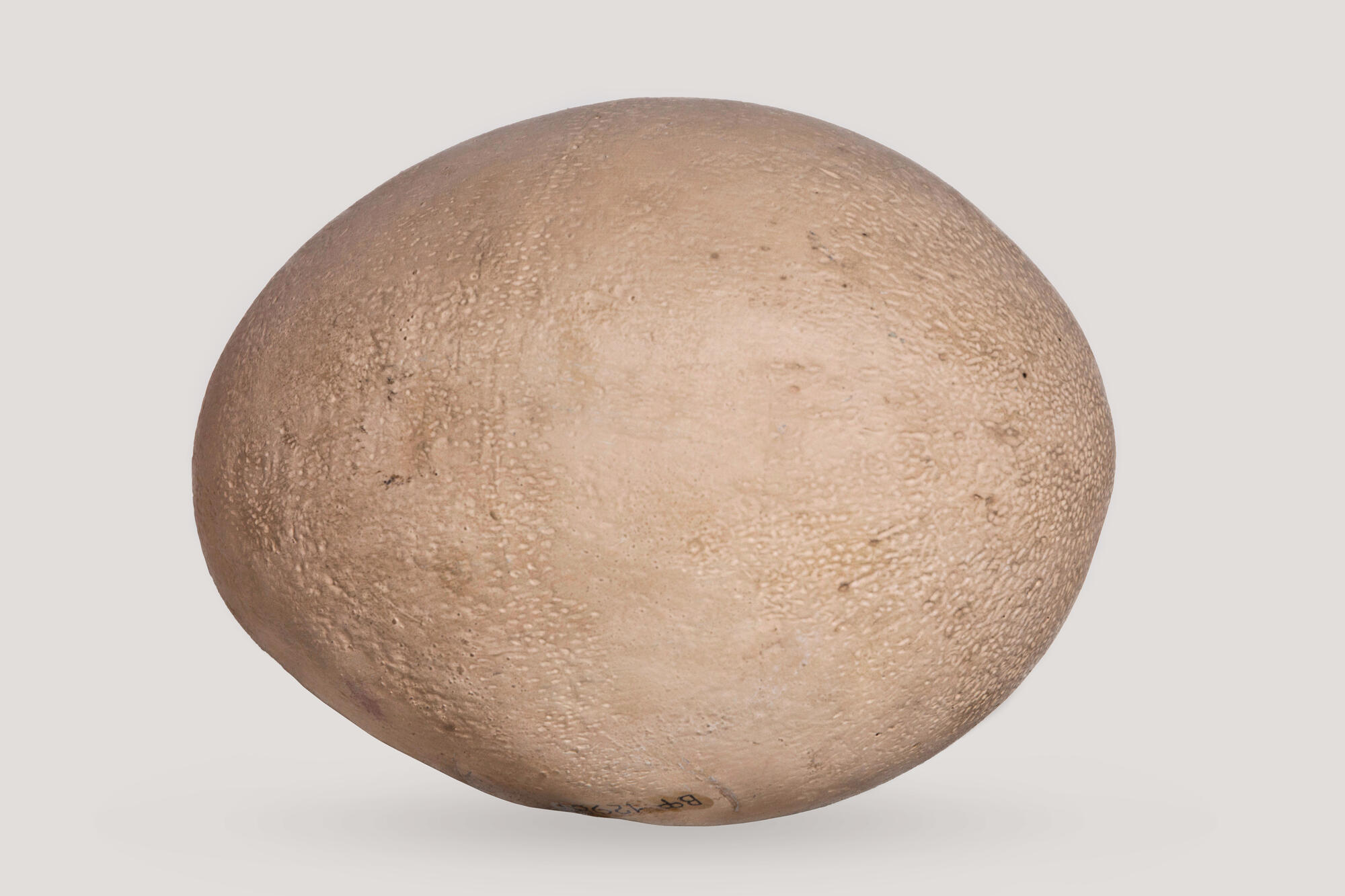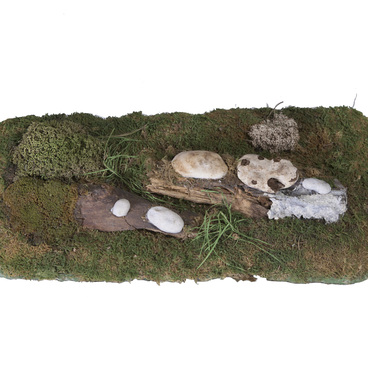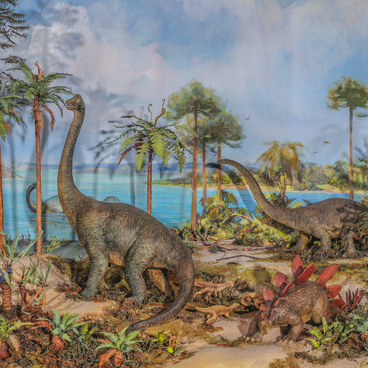The Biology museum displays a mock-up of a huge egg, which belonged to an extinct flightless bird–the Madagascar Aepyornis, or an elephant bird. This name appeared in the 13th century. It came from Marco Polo’s story about Roc. This story described a bird strong enough to ‘grab an elephant with its claws’.
Currently, scientists know about the remains of eight species of Aepyornis, which belonged to two families — Aepyornis and Mullerornis. These avian fossils dated back to the Pleistocene, the Quarternary period that began 2.58 million years ago and ended 11 650 years ago.
The Madagascar Aepyornis was one of the biggest birds in the world. It was 3–5 meters in height and weighed about 400 kg. Examination of the Aepyornis skulls showed that these birds had very poor eyesight and big olfactory bulbs. This means that they were crepuscular and focused on smells.
The Aepyornis eggs could reach one meter in circumference, 30–32 cm in length, and 8–9 liters in volume. Such an egg is about 160 times bigger than a chicken egg.
Scientists sometimes find fossilized eggs intact. For example, the Washington National Geographic Society has an exemplar with an embryonic skeleton of an unborn bird inside. Another giant egg is put on exhibit at the Harvard Museum of Natural History in American Cambridge, Massachusetts.
Many researchers think that Aepyornis died out because of people. One theory says that people hunted the Madagascar elephant birds to the extinction of all of them in a very short period.
However, the other scientists suggest that the eggs became the most vulnerable point in the life cycle of the Aepyornis. Some fragments of eggshells were found in the remnants of human bonfires during a recent study. That was the reason why the researchers decided that people got these eggs to support several families at the same time.
It is widely thought that the last Epyornis, which belonged to the species Aepyornis Maximus, was finally killed on the cusp of the 17th and 18th centuries.
Currently, scientists know about the remains of eight species of Aepyornis, which belonged to two families — Aepyornis and Mullerornis. These avian fossils dated back to the Pleistocene, the Quarternary period that began 2.58 million years ago and ended 11 650 years ago.
The Madagascar Aepyornis was one of the biggest birds in the world. It was 3–5 meters in height and weighed about 400 kg. Examination of the Aepyornis skulls showed that these birds had very poor eyesight and big olfactory bulbs. This means that they were crepuscular and focused on smells.
The Aepyornis eggs could reach one meter in circumference, 30–32 cm in length, and 8–9 liters in volume. Such an egg is about 160 times bigger than a chicken egg.
Scientists sometimes find fossilized eggs intact. For example, the Washington National Geographic Society has an exemplar with an embryonic skeleton of an unborn bird inside. Another giant egg is put on exhibit at the Harvard Museum of Natural History in American Cambridge, Massachusetts.
Many researchers think that Aepyornis died out because of people. One theory says that people hunted the Madagascar elephant birds to the extinction of all of them in a very short period.
However, the other scientists suggest that the eggs became the most vulnerable point in the life cycle of the Aepyornis. Some fragments of eggshells were found in the remnants of human bonfires during a recent study. That was the reason why the researchers decided that people got these eggs to support several families at the same time.
It is widely thought that the last Epyornis, which belonged to the species Aepyornis Maximus, was finally killed on the cusp of the 17th and 18th centuries.



